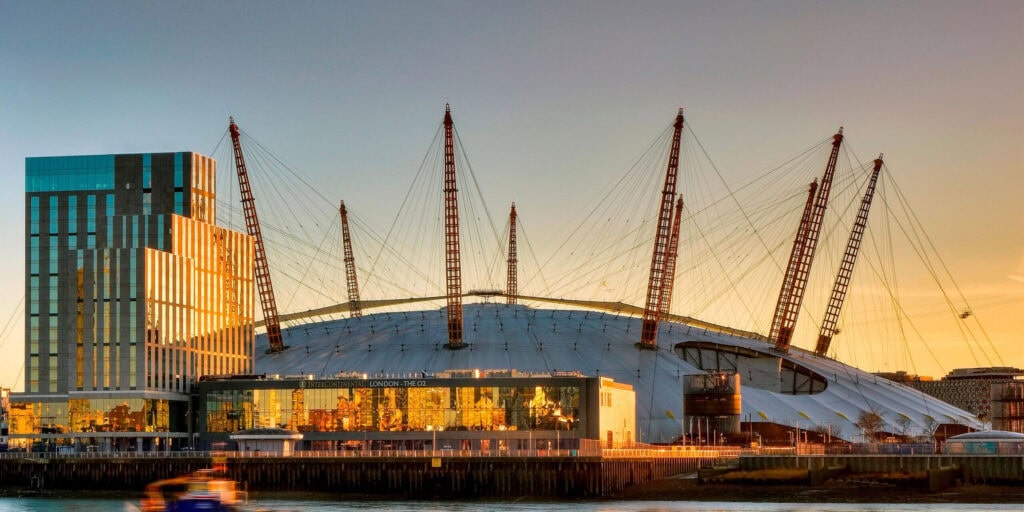From check-in to check-out, understand the pain points in the digital guest journey
To understand the tech trends developing in hospitality and hotel design, you have to start by understanding the behaviour of today’s guests. The digital guest journey starts before booking a hotel stay, and continues through to feedback after checking out. Each guest journey consists of multiple touchpoints with many different systems that are constantly evolving with new features and solutions to cater to the demands of existing consumers and the next generation of travellers.
The changes we’re seeing are specific to the type of technology, though in a general sense, they’re primarily aimed at removing guests pain points and enhancing the guest experience. That might mean enabling guests to check in/out at any point in a 24-hour window, rather than pre-determined times, or enhancing the guest check-in experience by letting them choose their exact room and check-in prior to arrival and get access to the room or lift using their mobile device.
Apps enabling greater control and choice
Deploying multilingual digital concierge apps for guests and staff to pull these touchpoints together on one platform is becoming more common. These apps give guests more choice and control, personalising their stay, and empowering staff to deliver an enhanced service. This might include setting up guestrooms in advance with guests’ known preferences, such as room temperature or lighting, say circadian-enabled or brightness levels adjusted.
Apps can also include key information on the hotel or local amenities/attractions, concierge requests, food and drink ordering, and payment all from the guest’s device or in-room tablet. The app can also provide control of guestroom systems and give more personalised control than traditional room control plates or TV remotes. Voice control is another option that operators have available to them.
Guests’ desire to experience something ‘unique’ is another driver of hotel suite and room design. We’re seeing more clients explore multipurpose suites which change usage depending on whether it’s day or night. Similarly, operators are deploying more themed suites that focus on different demands from guests, such as large digital artwork throughout the suite or high-end gaming systems.
No discussion about hospitality technology would be complete without mentioning AI, which is being used in several ways to enhance operations and deliver personalised experiences. Hospitality systems are already using AI, with tools like chatbots, CCTV analytics, data analytics and forecasting and predictive maintenance bringing the power of AI to bear on hotel offerings. I expect AI to enable enhanced personalisation as we move forward, and greater use of augmented reality (AR) could enable more immersive and interactive guest experiences.
Tech challenges and tips for new-builds or refurbishment projects
Start with a fundamental: the number of technical and technological systems that go into a hotel operation is vast. So, it’s essential to clearly understand a project team’s responsibilities versus what will be delivered by the operator and when. Failing to get this clear at the beginning often means costs and delays for the developer along the way.
Many of Blend’s hotel projects are either new build or refurbishment projects, meaning a project that runs from two to five years or more. A timeframe like this obviously means challenges in terms of technology procurement and installation, so spend some time early on in the project agreeing on a procurement strategy that considers procuring systems in the main construction tender or later, as a client direct package managed by the technology consultant.
For example, that could be delaying procurement of IPTV/guest entertainment systems until later in the project, to ensure the hotel has the latest available solution that addresses its image. I’d also recommend a technology obsolescence/innovation review prior to contractors actually ordering hardware for installation, so you can assess any hardware that may be coming to the end of its life or new products that should be considered in its place.
Project management presents its own challenges: there’s often not enough time allowed in design programmes for design team coordination. Design team deadlines are often all on the same date, making it hard to coordinate. Fixed plans from architects or interior designers should be issued well before these deadlines to allow the other consultants to carry out coordination activities.
I’d also always be careful about introducing technology that hasn’t been developed specifically for the hotel sector. Guestroom entertainment systems are a good example, since products chosen for guestrooms must have certain hospitality features, such as volume limiting, or cache data clearing after checkout. It’s worth having a fully functional mock-up room at the design phase so you can test the technology rather than just give a visual sign-off based on aesthetics. Mock-up rooms should be built early in the project so any changes needed can be captured in the design work. If you build a mock-up room too late in the project, it’s often too late to make easy changes.
The evolving role of tech in hospitality and design
Technology plays many key roles in hospitality and design, and will continue to do so moving forward, enhancing guest experiences, removing pain points, and driving operational efficiencies. In addition to guest experiences, tech will bring benefits to design of spaces in terms of sustainability, health & fitness, multi-purpose public areas and guest safety.
Sustainability is an important consideration for today’s travellers, and technology can help hotels drive efficiencies across operations. With accurate occupancy sensing that can detect when a guest has left the room or if a room occupant is a guest or housekeeping, room systems can be set to minimise energy usage. We’re even exploring ways of gamifying this such that guests are rewarded for minimising energy consumption during their stay.
Public areas in hotels have evolved significantly too. Gone are stuffy reception areas with numerous check-in desks, these spaces now cater for a variety of needs and visitors that change during the day, and technology needs to support this. That could be providing great Wi-Fi for example, and with it the ability for operators to track and understand how people use the space at different times of day. It could also be used to provide a different ambience during the day through lighting control and high-quality background music systems.
Technology is also helping create ‘white box’ areas or food and beverage spaces that can be transformed for pop-up concessions or events to encourage local residents to use hotels. That could be through the integration of tie line infrastructure or even large-scale LED walls or projection mapping technologies to “dress” the space to suit the desired use case.
Technology enables ongoing transformation hotels and hospitality, but it’s only as valuable as how it’s tailored to trends and guest expectations. What will remain constant is the need for technology to underpin and enable the guest experience and give hotels a competitive edge over rivals.



